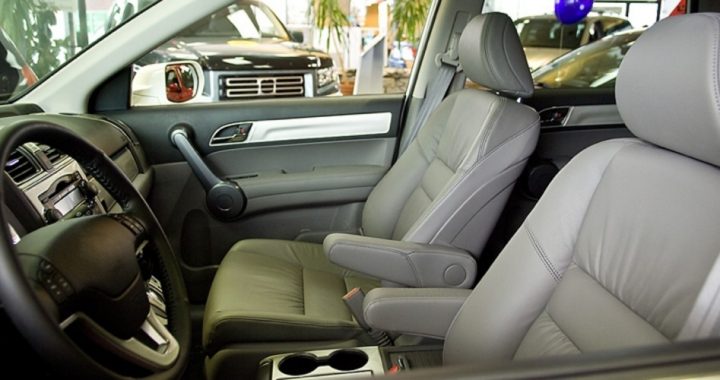
When Patrina Thomas decided it was time to trade in her 2002 Jeep in the summer of 2013, she went back to her local friendly Chrysler dealer. They were only too happy to take her Jeep as a down payment on a used 2008 Chrysler Sebring with the balance, an estimated $10,000, financed at 20.4 percent interest. Because her credit score was below 620, she qualified for “special” financing provided by Santander Consumer USA Holdings, a lender working closely with Chrysler Capital in such cases.
Her payment was so high — $385 a month — that she struggled to make it from the very first month. It finally got beyond her ability to pay, and the car was repossessed a year later. With a market value today of just $4,600 and her remaining loan balance of $7,600, she is upside down by $3,000.
Thomas has lots of company. According to the Wall Street Journal:
Borrowers who took out auto loans over the past year are missing payments at the highest level since the [Great Recession], fueling concerns among regulators, analysts and some in the car industry that practices that helped boost 2014 light-vehicle car sales to a near-decade high, could backfire.
Among all those who used “special financing” (i.e., subprime loans) to buy a vehicle in the first quarter of 2014, more than 8.4 percent of them had missed at least one payment by November. This, according to Equifax, the credit-reporting agency, was the highest level since 2008. Such sub-prime financing represented one in five loans in 2009 but has since risen to nearly one in four, just under the peak hit in 2007 that approached nearly one in three.
Federal regulators began taking notice of the weakening of lending standards two years ago, but have only put lenders “on notice” that they’re being watched. Last year the Justice Department demanded information about sub-prime lending practices at Ally, General Motors Financial, Inc., and Santander, but the investigation is ongoing, with no sanctions being put in place at present. Kevin Dugan, head of securitization for Fitch Ratings, is getting nervous: “Subprime delinquencies and losses are beginning to grow at a more rapid pace than we’ve seen in a long time.”
Industry spokesmen have been quick to brush aside any concerns about another bubble. First, the auto-loan industry is less than $1 trillion, compared to the $10 trillion real estate mortgage at the start of the recession. Second, auto loan debt is only about 20 percent higher than it was prior to the start of the recession. Third, each loan is collateralized by the financed vehicle, and there is an active aftermarket for those that are repossessed, although, as Thomas found out, at a severe discount to what she thought her Sebring was worth.
Bill Himpler, executive vice president of the American Financial Services Association, which represents auto lenders, asserted, “Auto loans continue to perform well, as they did during the recession. Concerns about a spike in delinquencies have not been substantiated by the evidence.”
Himpler might want to speak to someone over at Santander who arranged the financing for Thomas. One of the 15 biggest U.S. auto lenders, Santander had a 16.7 percent delinquency on its auto loans in the third quarter, according to SNL Financial. That’s one in every six loans. Or Himpler could ask Ally why, if the aftermarket is so strong and if financed vehicles going into repossession can easily be sold, they were forced to write off $341 million of their $355 million of “nonperforming” loans as of September 30. That write-off for Ally is up nearly 20 percent from a year earlier.
But that has scarcely deterred Santander from continuing to make loans to subprime borrowers, claiming on its website, “We specialize in automotive financing for dealers and consumers. Our finance programs help consumers with a wide range of credit situations purchase quality vehicles.” At present Santander, and presumably every other subprime lender, is going after the tax refund market. Here’s the pitch from Santander:
Now that we’ve gone from holiday season to tax season, it’s time for millions to go … shopping for a new vehicle with the money they receive in their tax refunds. Will you be one of those shoppers in 2015?
According to Santander, tax refunds for 100 million Americans averaged $2,700 last year and they are expected to top $3,330 this year. As Santander effuses:
That’s enough to cover about half the 20 percent down recommended by financial experts on a $25,000-$30,000 new or used vehicle.
Santander is positively salivating over the potential:
More than 20 percent of those who expect to spend their refunds on something vehicle related … will use the money toward purchase of a new or used car.
That comes to about 10 million vehicles….
That being said, you still probably have questions on how to use your tax refund to buy a vehicle. That’s where we hope to help.
In 2009, at the very bottom of the recession, just nine million vehicles were sold. Since then the growth curve has been straight up, topping out in 2014 at more than 17 million. With nearly a third of those purchases being financed with subprime loans, how much longer can that growth be sustained? How much of the recently ballyhooed five-percent annual growth rate in the country’s GDP can be attributed to people buying cars that they can’t afford? When those chickens come home to roost, is it not reasonable to expect the same bleeding over from subprime car loans to regular financing just as subprime mortgage loans spread to the regular market?
As George Santayana said: “Those who cannot remember the past are condemned to repeat it.”
A graduate of an Ivy League school and a former investment advisor, Bob is a regular contributor to The New American magazine and blogs frequently at www.LightFromTheRight.com, primarily on economics and politics.



